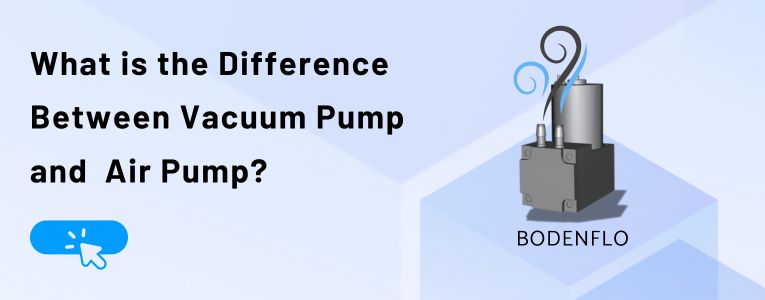
When dealing with different types of pumps, it’s easy to get confused. Many people often wonder: what's the difference between a vacuum pump and an air pump? Whether you're involved in industrial applications, scientific research, or everyday home tasks, understanding the distinctions between these two types of pumps is crucial.
So, what exactly sets them apart? Simply put, a vacuum pump is designed to remove air or gas from a sealed space, creating a vacuum. On the other hand, an air pump is used to move air or gas from one place to another, typically adding pressure to an environment.
If you’re still curious about how these pumps differ and why it matters, keep reading. This guide will help you understand their unique functions, applications, and much more.
What Are the Primary Functions of a Vacuum Pump?
A vacuum pump operates by removing molecules of air or gas from a sealed chamber, thus creating a vacuum. This process is essential in a variety of industries, from manufacturing to scientific research. For instance, in the semiconductor industry, vacuum pumps are crucial for processes like chemical vapor deposition and ion implantation.
Applications in Science and Industry
Vacuum pumps are invaluable in scientific applications, where the removal of air and other gases is necessary to prevent contamination. For example, in laboratories, vacuum pumps are often used in mass spectrometry and electron microscopy, where even the slightest air presence could distort results.
If your work involves any kind of process that requires a low-pressure environment, a vacuum pump is indispensable. For more in-depth information on the various types of vacuum pumps and their applications, you can refer to this comprehensive guide on vacuum technology.
What Are the Key Roles of an Air Pump?
Unlike vacuum pumps, air pumps are designed to move air or gas from one location to another. They are typically used to add pressure, fill, or aerate environments. Air pumps are commonly found in everyday items like aquariums, air mattresses, and inflatable toys. But they also have more complex uses, such as in HVAC systems, medical devices, and even automotive applications.
Air Pumps in Everyday Use
Air pumps are not just for industrial or technical use. They are integral to many common household items. For example, the small pump that inflates your bike tire or the one that keeps your aquarium aerated are both types of air pumps.
Air pumps are versatile and can be found in both low-tech and high-tech applications. Their ability to generate airflow makes them essential in various scenarios, whether it’s keeping a car engine cool or ensuring your fish get enough oxygen.
How Do These Pumps Differ in Terms of Design and Construction?
The design of vacuum pumps and air pumps reflects their different functions. Vacuum pumps are generally built to handle the removal of gases, and they often include complex mechanisms like rotary vanes, pistons, or diaphragm systems to achieve this. They also need to be more robust and airtight to maintain the vacuum created.
Structural Differences
Air pumps, however, are usually simpler in design. Their main job is to move air, so they don’t require the same level of sealing or complex mechanisms. This simplicity often translates to lower manufacturing costs and easier maintenance, making air pumps more accessible for everyday use.
In essence, the construction of these pumps directly aligns with their intended functions. For those interested in a more technical comparison, I recommend exploring this detailed analysis of pump design differences.
How Do Vacuum Pumps and Air Pumps Differ in Applications?
The applications of vacuum pumps and air pumps vary significantly due to their distinct functions. Vacuum pumps are more specialized and are typically used in environments where the removal of air is critical. These include scientific laboratories, semiconductor manufacturing, and even space exploration.
Specific Use Cases
Air pumps, on the other hand, are more ubiquitous and versatile. They can be found in simple household devices, industrial machinery, and medical equipment. Whether it's inflating an air mattress or powering an airbrush, air pumps are built for a broad range of uses.
Understanding these applications is key to choosing the right pump for your needs. If you're unsure which pump suits your project, take a look at this guide on selecting the right pump to ensure you make an informed decision.
Which Pump Is More Suitable for Your Needs?
When deciding between a vacuum pump and an air pump, consider the specific requirements of your application. If your task involves creating a vacuum or removing air from a space, a vacuum pump is the right choice. However, if you need to move air or gas from one location to another, an air pump is more appropriate.
Factors to Consider
It's also important to consider factors such as cost, maintenance, and energy efficiency. Vacuum pumps are generally more expensive and require more maintenance due to their complex design. Air pumps, being simpler, are usually more cost-effective and easier to maintain.
Choosing the right pump is crucial for efficiency and effectiveness in your operations. For further guidance, this decision-making guide offers valuable insights on selecting between vacuum and air pumps.
How Does Energy Efficiency Compare Between Vacuum Pumps and Air Pumps?
Energy efficiency is a significant factor in choosing between a vacuum pump and an air pump. Vacuum pumps tend to consume more energy due to their intricate design and the need to maintain a vacuum. This can lead to higher operational costs, especially in energy-intensive environments.
Air Pump Efficiency
Air pumps, on the other hand, are typically more energy-efficient. Their simpler design means they require less power to operate, making them a better choice for applications where energy consumption is a concern. This is especially relevant in sustainable and green technologies, where every watt counts.
For those focused on energy efficiency, air pumps often offer a more sustainable solution. If energy consumption is a primary concern, you might find this comparison of pump energy efficiency helpful.
BODENFLO’s Versatile Pump Solutions: Tailored for Precision and Reliability
At BODENFLO, we specialize in providing a comprehensive range of micro pumps, encompassing both air pumps and vacuum pumps. Our products are meticulously engineered to cater to a broad spectrum of applications, making them an ideal choice for engineers and procurement specialists seeking reliable, high-performance solutions.
What sets our offerings apart is not just their ability to perform independently but also their adaptability to custom configurations. For applications requiring the frequent alternation between pressure and vacuum, we offer tailored solutions designed to meet these specific demands. These custom micro pumps are typically integrated into compact devices, ensuring seamless operation without compromising on space or efficiency.
Our pumps are commonly used in critical environments such as medical devices, environmental sampling systems, industrial machinery, and household appliances. Designed for continuous operation, they stand out for their reliability and stability, ensuring that your systems perform optimally, even under the most demanding conditions. With BODENFLO, you’re not just selecting a pump—you’re investing in precision, durability, and unparalleled performance.
Conclusion
In summary, vacuum pumps and air pumps serve different yet equally important functions. Vacuum pumps are essential for creating low-pressure environments, while air pumps are versatile tools for moving air or gas. Understanding these differences is key to selecting the right pump for your specific needs. Whether you’re working in an industrial setting, a laboratory, or simply need a reliable pump for home use, knowing what each type of pump offers will help you make an informed decision.
If you have any questions or need further assistance in choosing the right pump for your application, feel free to reach out (info@bodenpump.com). We're here to help you find the best solution for your needs.


